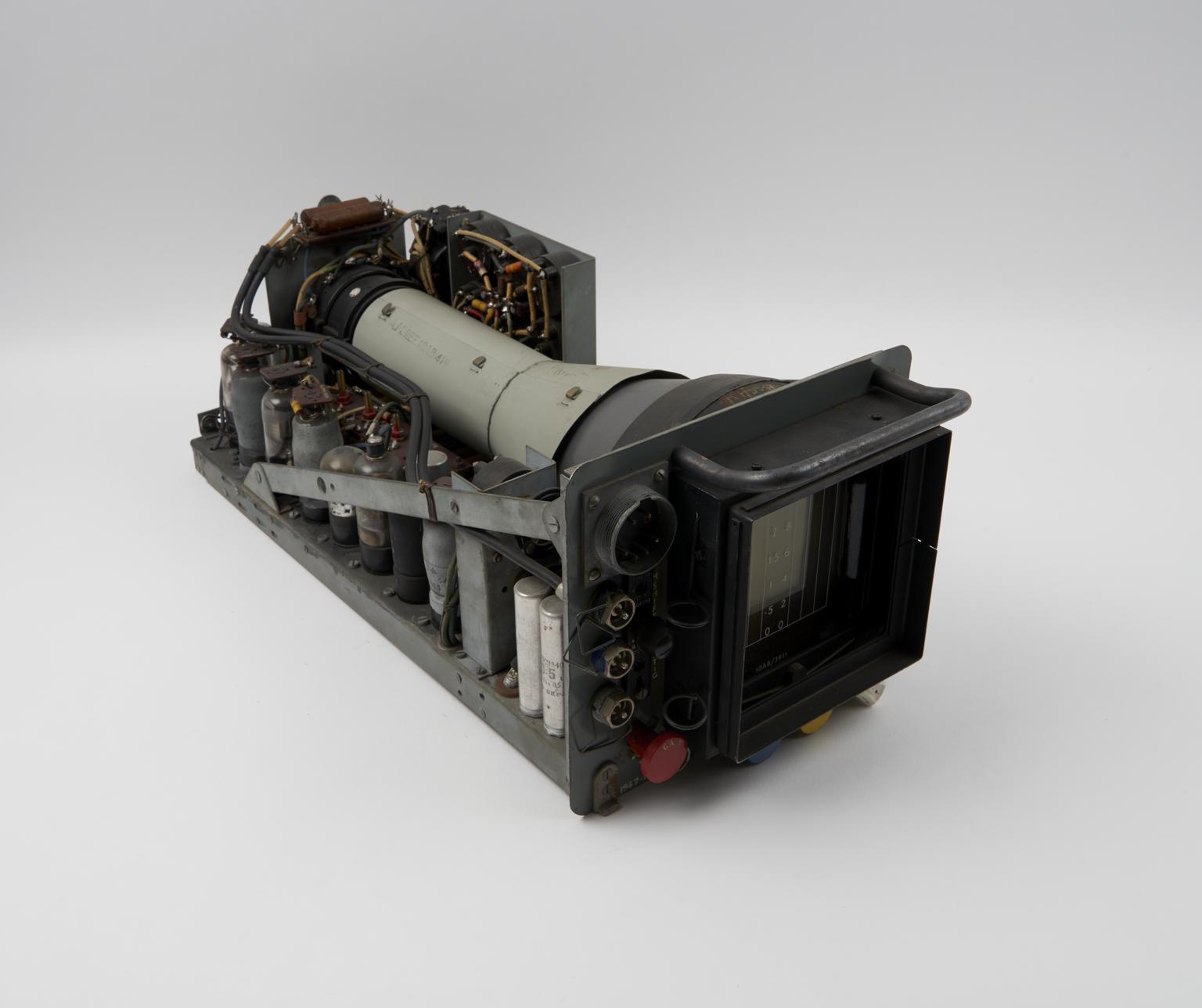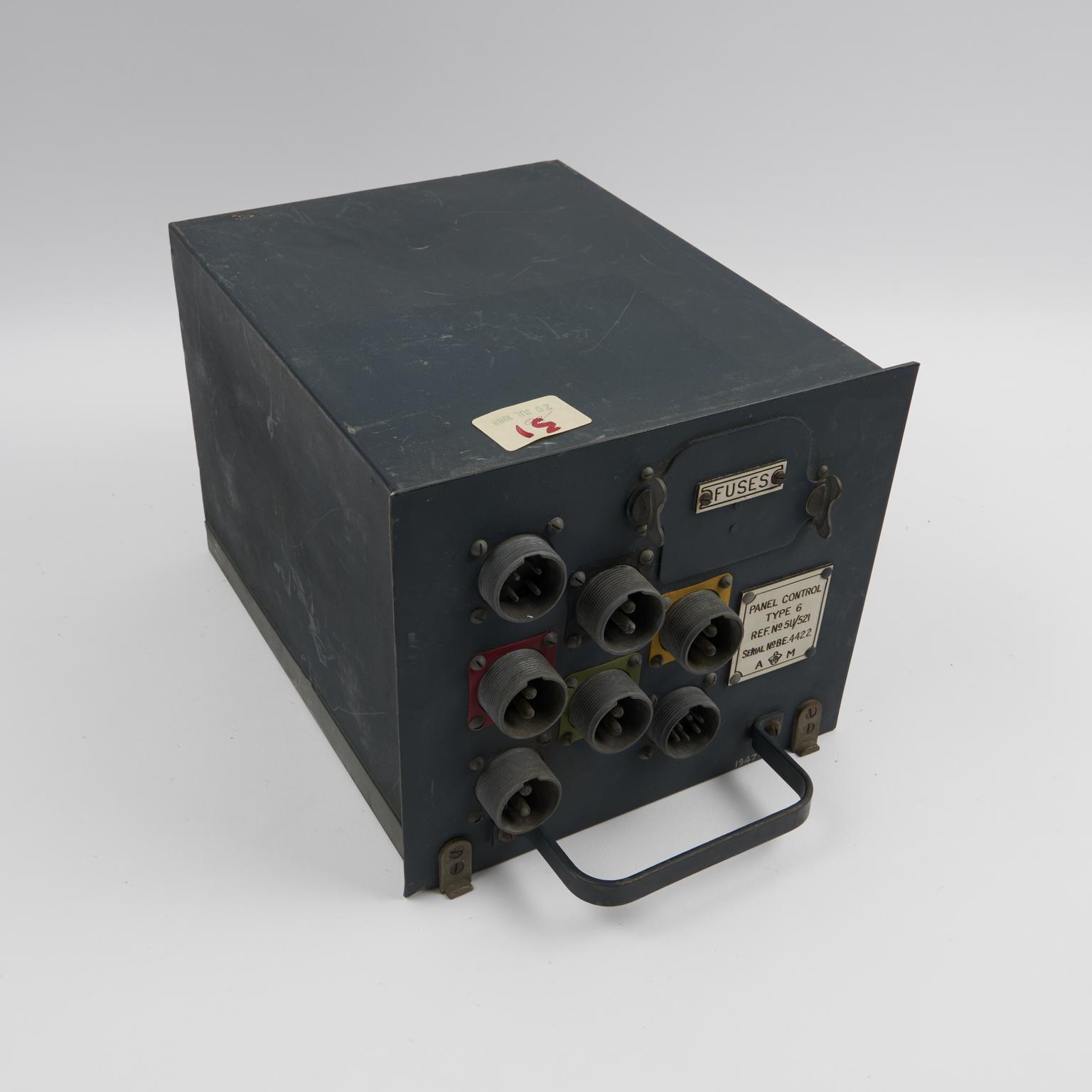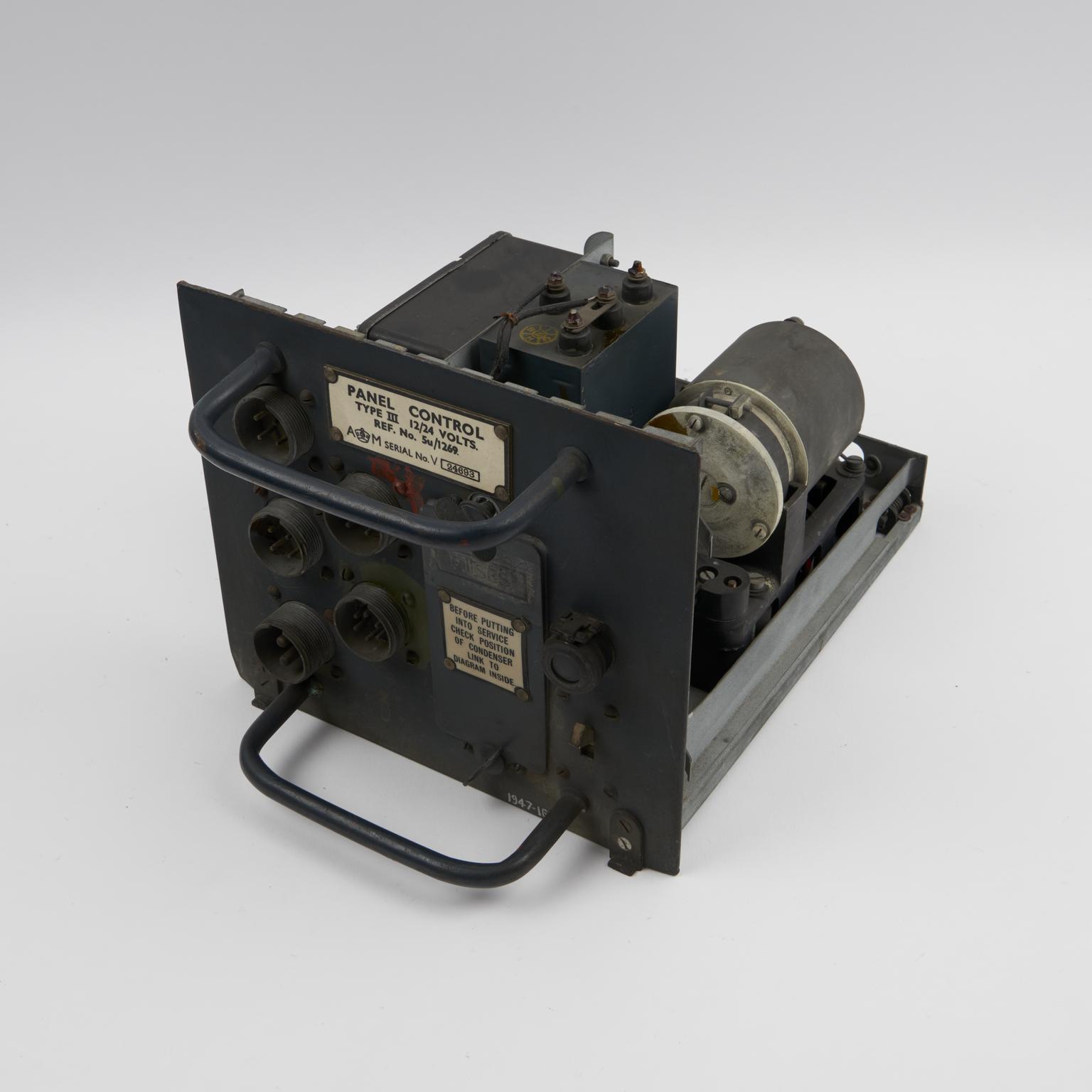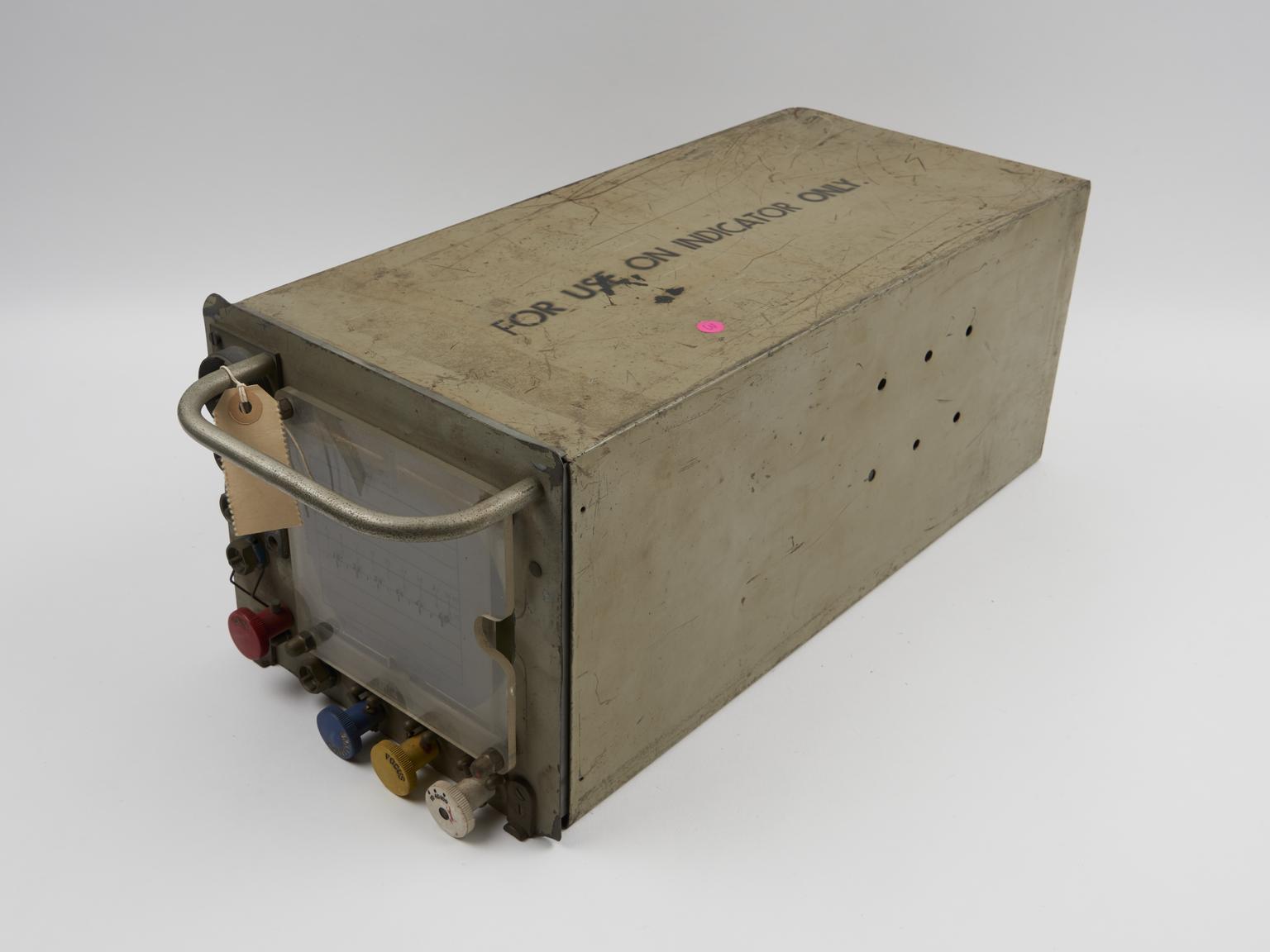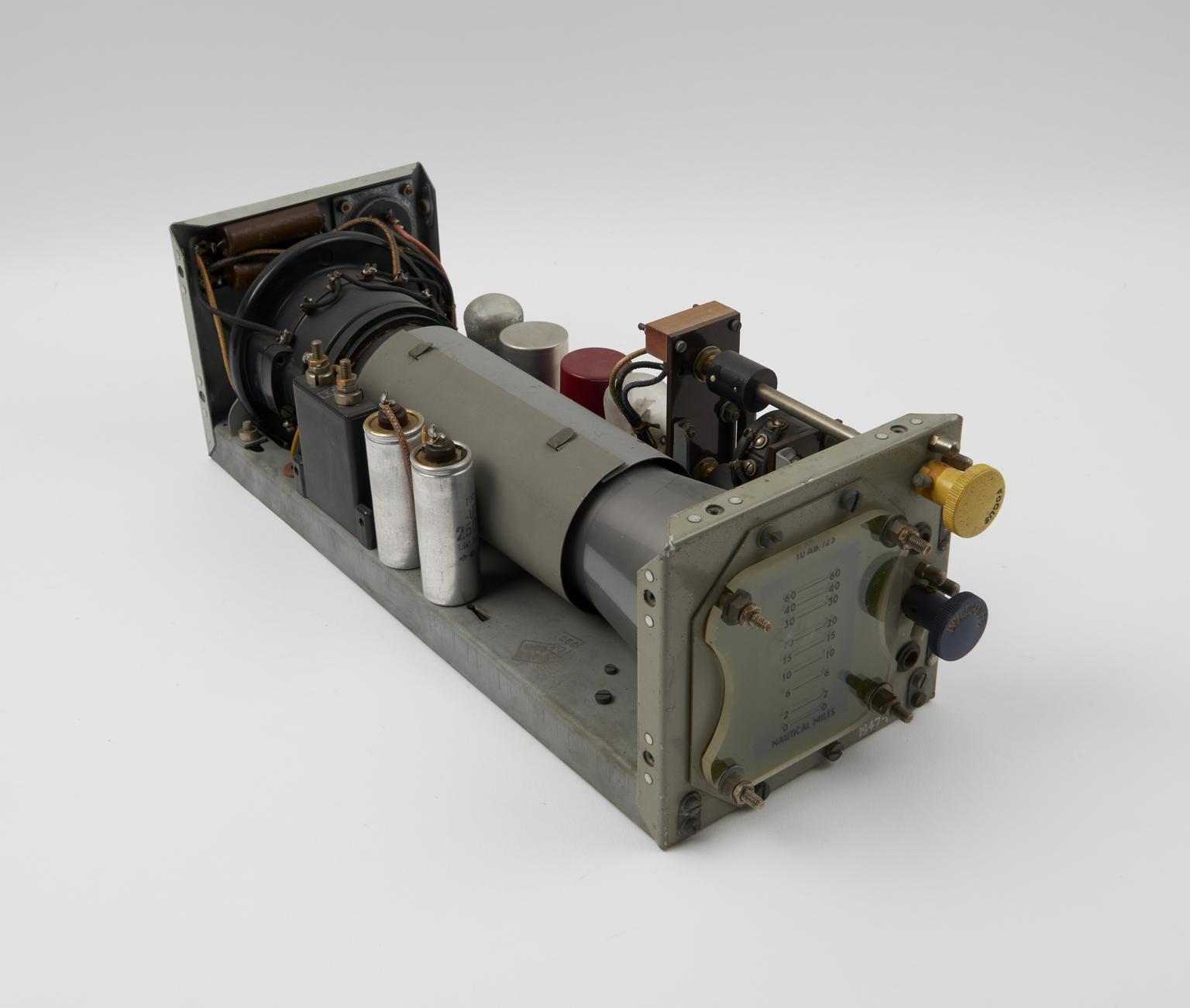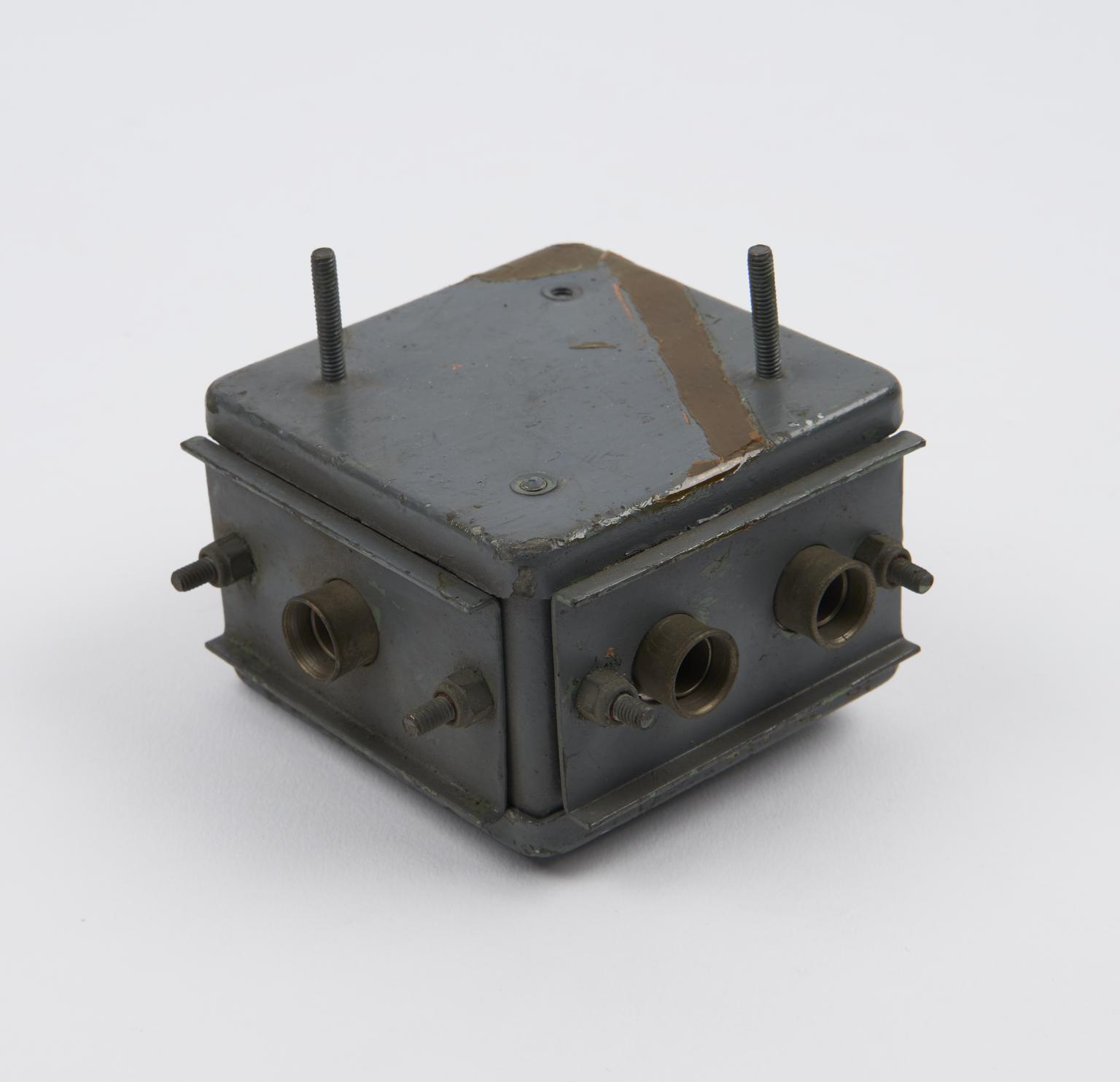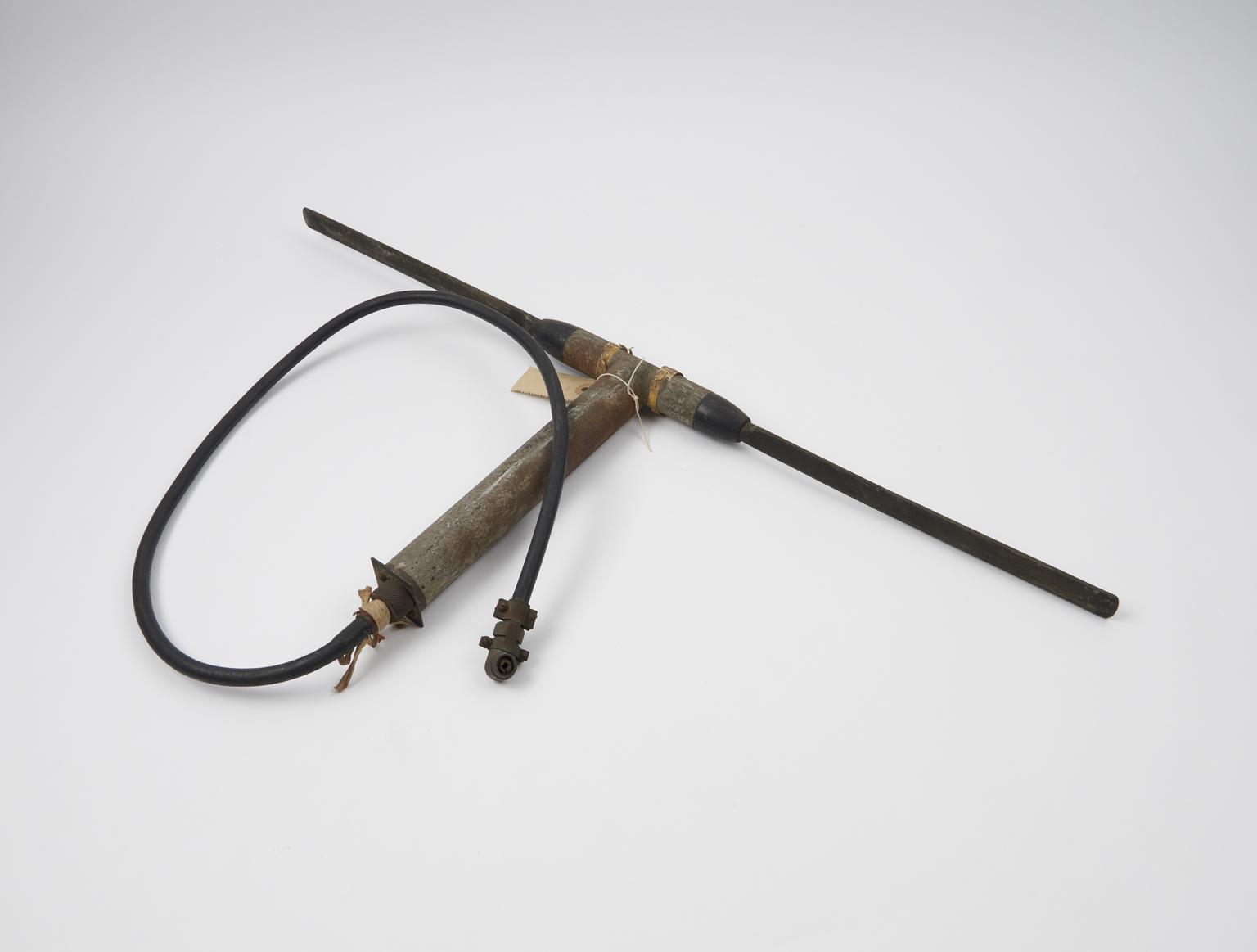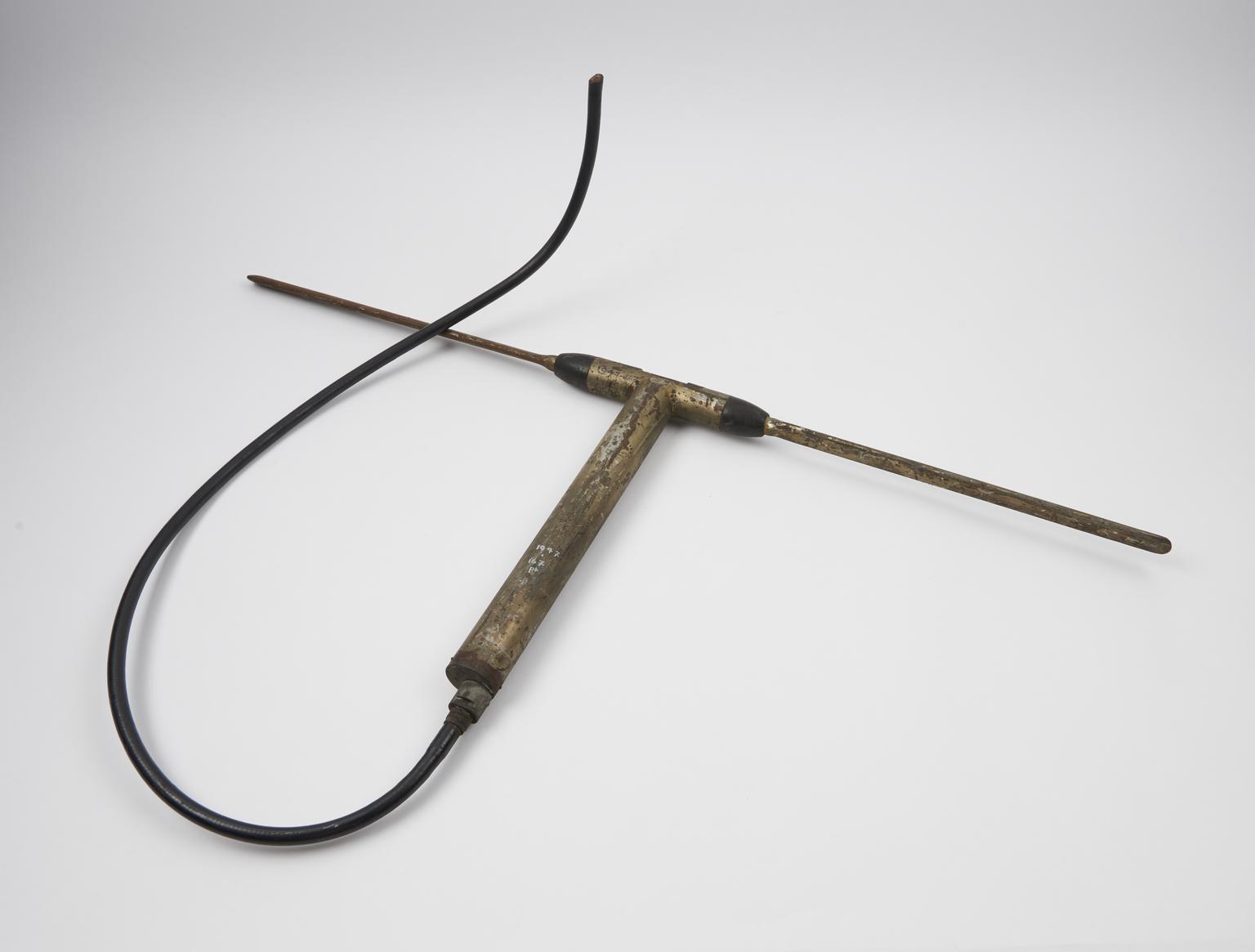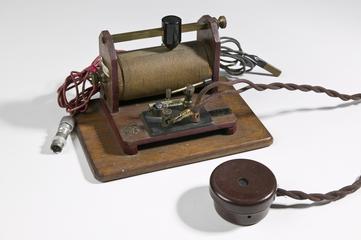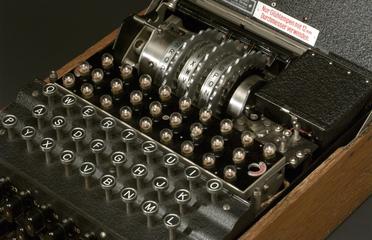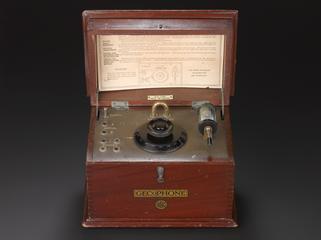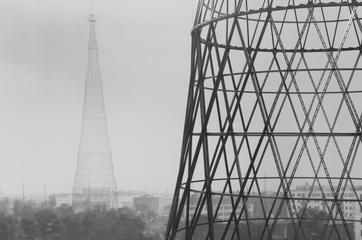'Yagi' aerial for ASV (Air-to-Surface-Vessel radar) Mk.11.N.
Radar, Air-to-Surface Vessel, Mark II, or ASV Mk. II for short, was an airborne sea-surface search radar developed by the UK's Air Ministry Research Establishment and the Royal Aircraft Establishment, Farnborough during 1940 and was used during 1941 and onwards in the Royal Air Force (RAF) and Fleet Air Arm for the detection of vessels at sea. It played an important role in the Battle of the Atlantic and was one of the major factors in the final outcome. It was the first aircraft mounted radar of any sort to be used operationally and was widely used by aircraft of the RAF Coastal Command, Fleet Air Arm and similar groups in the United States and Canada.
The apparatus comprised of a radar transmitter and receiver with a directional aerial system. The transmitter sent out short high-power pulses which struck objects such as surface vessels from which they were reflected as echoes. The echoes were detected by the receiver and presented to the observer on the cathode ray tube in the Indicator Unit. The time interval elapsing between the transmission of a pulse and the reception of its echo gave a measure of the distance of the reflecting object.
The equipment could detect a ship or surfaced submarine at ranges of up to 12-15 miles and it could pick up echoes from the coastline for navigation purposes up to 50-70 miles. It could also be used for homing purposes in conjunction with a radar beacon at ranges up to 80-90 miles.
Several thousand sets were manufactured and equipped a variety of RAF Coastal Command aircraft such as Hudsons, Whitleys, Sunderlands: Fleet Air Arm aircraft such as Swordfish; and American Navy patrol aircraft such as the Catalina. By late 1942 German U-boats were carrying Metox receivers, which enabled them to detect ASV Mk II emissions. This set was increasingly replaced with ASV Mk III.
This particular example was designed for the Fairey Barracuda aircraft, a British carrier-borne torpedo and dive bomber designed by Fairey Aviation in use from 1941 to 1945.
- Object Number:
- 1947-167/1
- type:
- radar equipment

